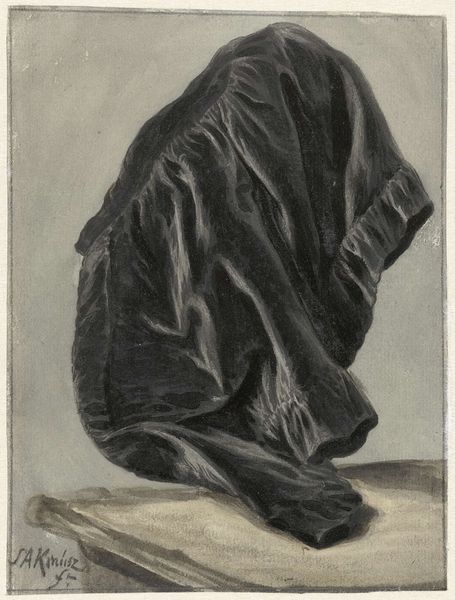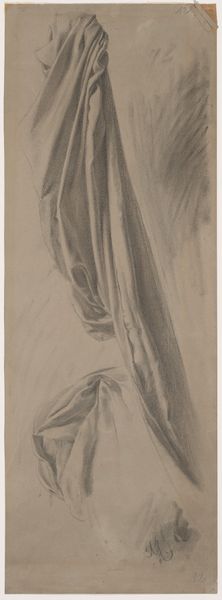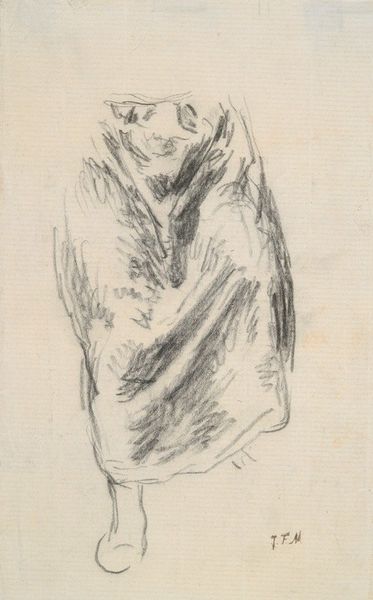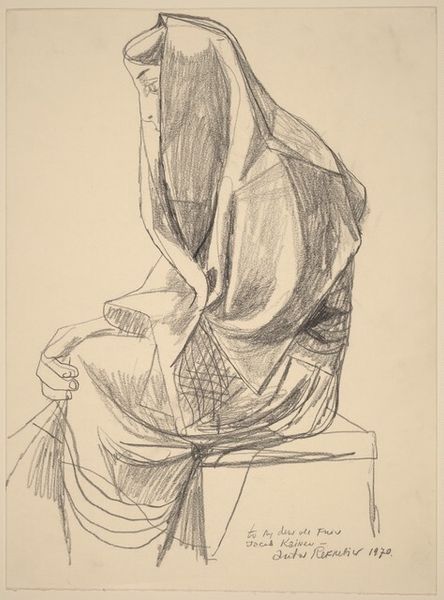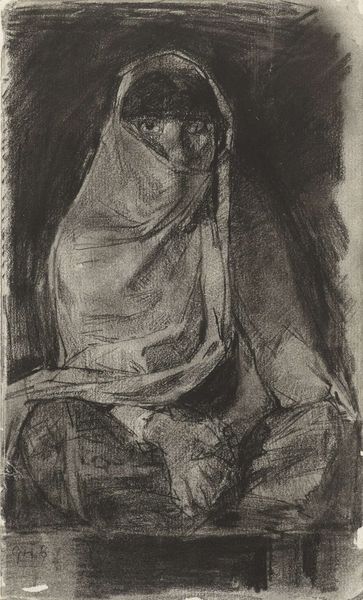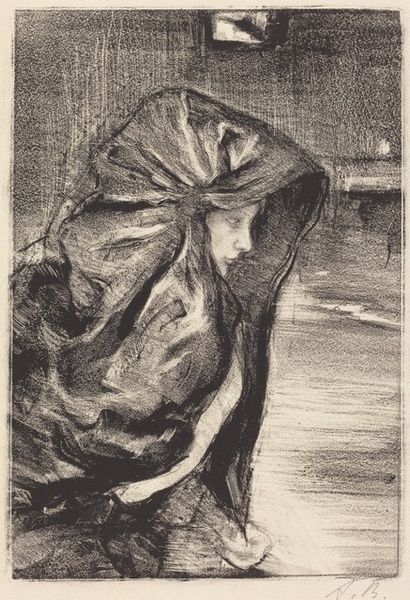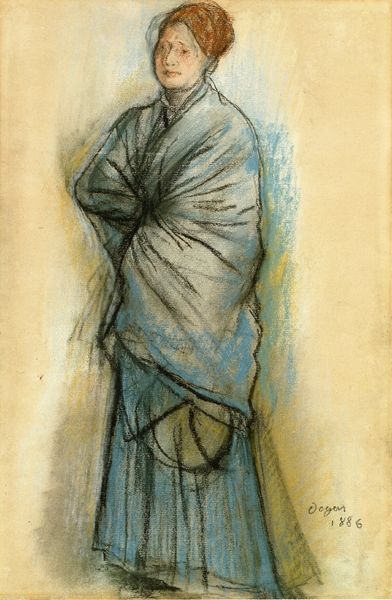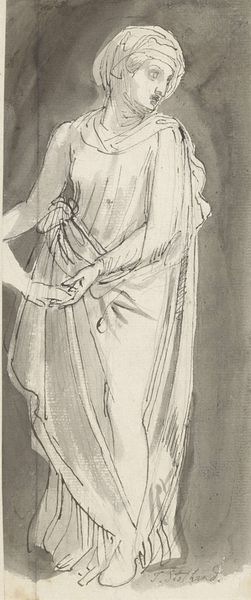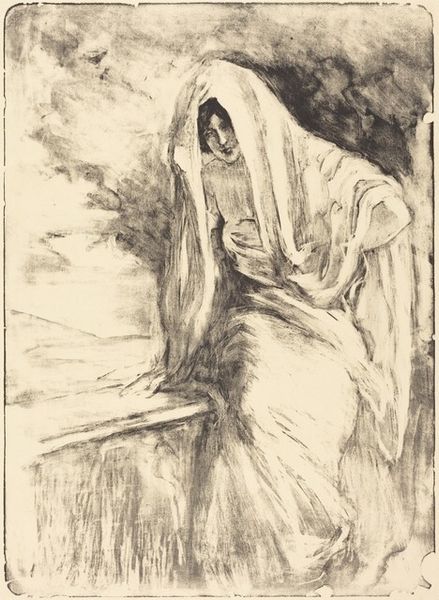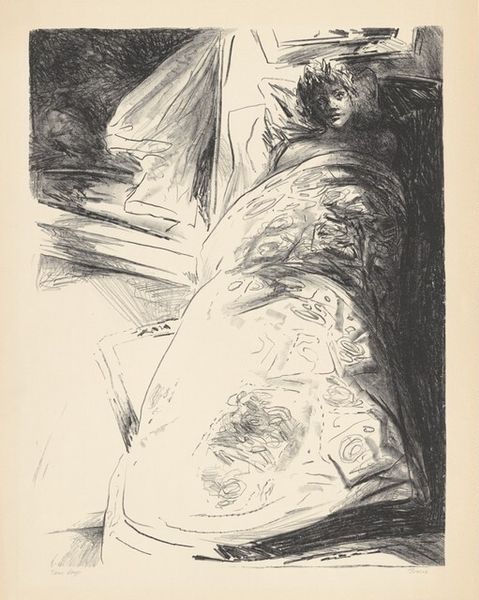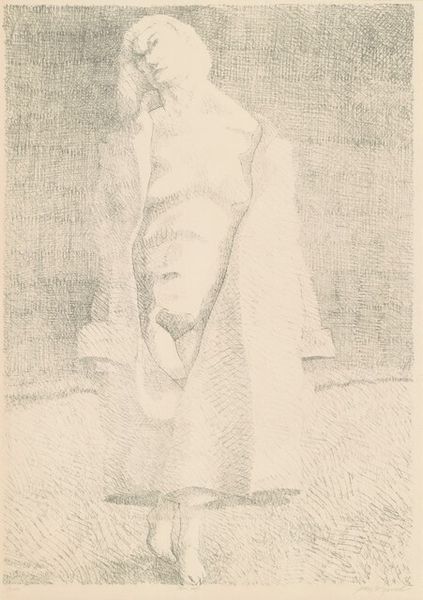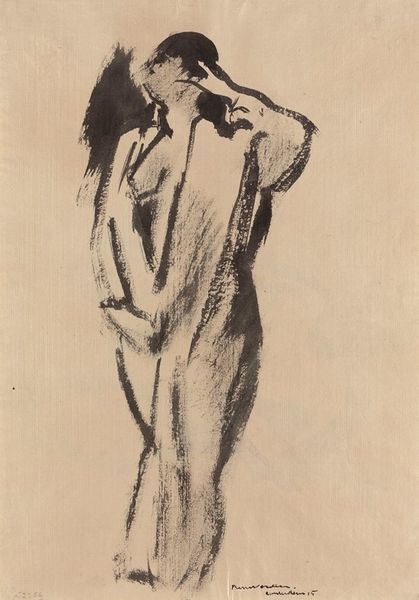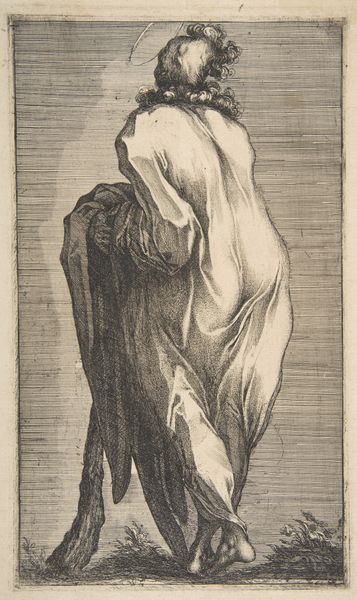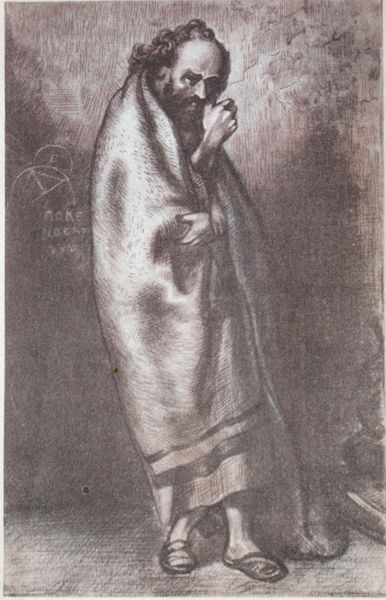
drawing, paper, charcoal
#
drawing
#
charcoal drawing
#
paper
#
form
#
pencil drawing
#
romanticism
#
line
#
charcoal
#
academic-art
#
charcoal
Dimensions: height 321 mm, width 202 mm
Copyright: Rijks Museum: Open Domain
Curator: Before us is *Draperiestudie*, a drawing crafted with charcoal on paper by Simon Andreas Krausz, sometime between 1770 and 1825. Editor: It's arresting—the stark contrast. The draped fabric practically glows against the inky void behind it. There's a weightlessness, almost ghostly, to the folds. Curator: The artwork aligns with academic art traditions. Consider the focus on form, a deep engagement with the possibilities of line work. The intent isn't to represent a specific object, but to examine how light and shadow play across a surface. These drapery studies were commonly used in workshops to instruct students. Editor: That emphasis on form speaks to the broader social function of art education during that period, right? The Academy's role in standardizing artistic practices. Was this study typical of how they used drawings? Curator: Exactly. Academic art heavily regulated what was acceptable in style and content. *Draperiestudie* embodies the idea that mastering form was fundamental for all other types of subject matter, particularly the human figure. Artists would focus intensely on observing and recreating classical forms. This piece shows a clear adherence to those principles. Editor: Yes, but it feels also so Romantic! Away from neoclassical austerity and precision in favor of something that flirts with texture. It transcends pure, objective study and becomes something quite beautiful and compelling in its own right. The whiteness of the fabric has something unsettling. This "study" in pure form touches on race, class, religion: power in all its various expressions, social fabrics we continue to weave even now. Curator: It makes me reflect on how these educational exercises both constrained and enabled artists. It reflects an emphasis in artistic training in Western Europe, but maybe the effects were quite paradoxical, particularly across Europe. It shows us art production within institutional settings. Editor: Indeed. It's a dialogue between rigid structure and nascent self-expression—a study of control as much as contour. It shows us an approach to learning that's embedded in layers of history. Thank you. Curator: Thank you.
Comments
No comments
Be the first to comment and join the conversation on the ultimate creative platform.
